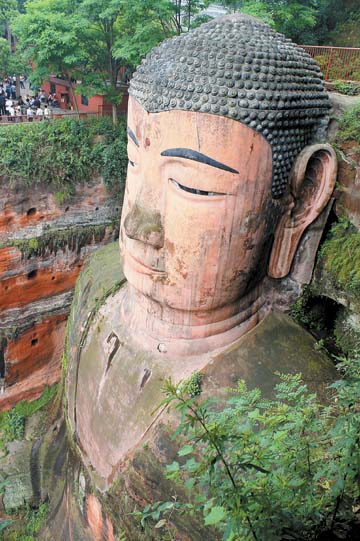 James Baquet IT was a busy, big day! My wife and I left Chengdu by an early bus for Leshan, home to the world’s largest carved stone Buddha. Despite its worldwide status, though, the colossus was not our primary goal. Avoiding the nearby Disney-esque theme park, we made our way directly to the Big Guy himself. We visited the cave of the monk Haitong, who instigated the Big Buddha’s construction in 713, and peeked inside Lingyun Temple, which was under construction. Down river is Wuyou Temple, number 121 on my list of 142. After wandering past ancient cave-tombs, and through a former fishing village now given over to selling souvenirs, we reached the Haoshang Bridge. Wuyou Temple is separated from the Big Buddha area by a river that creates a sort of peninsula, and Haoshang is the “shortcut.” I’ve seen a lot of bridges in my travels, but this one is by far the most beautiful, and all the more so for having been come upon unexpectedly. After toiling up the steps to the top of Wuyou Mountain and the temple, we were delighted at the unusual design of the place. A tiny ancient courtyard is its heart. To one side, up a hill, is a hall dedicated to the Wuyou Buddha, a frightful-looking esoteric figure said to have been cast in India in the Tang Dynasty (618-907), and after which the temple was named. On the other side of the main compound is a 500 Arhats Hall with beautifully painted life-sized clay figures of 500 of the Buddha’s disciples. Beautiful buildings with beautiful artifacts in a beautiful setting. | 
